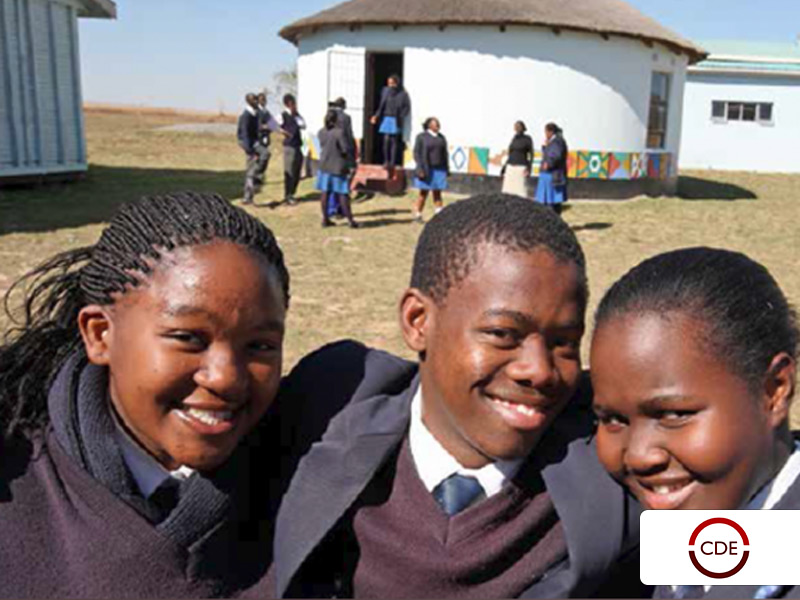Low-fee private schools

New players, affordability and choice boost growth of South Africa’s low-fee independent school sector
In a report released today,
the Centre for Development and Enterprise (CDE) combined international insights from Sir Michael Barber into low-fee private (independent) schools, and new research examining the latest developments, new and emerging players, and the significance of low-fee schools’ growth in South Africa.
“Given the seriously low level of learner achievement in the public schools, a key issue for CDE is whether developments in the independent school sector can help with reform of South African education,” explained CDE’s Programme Director Dr Jane Hofmeyr.
Barber, a leading authority on education reform and low-cost private schools, pointed to the tremendous growth of these schools in developing countries. Between 1990 and 2010 the percentage of students in low-income countries attending private primary schools doubled, from 11 to 22 per cent. In India, with 253 million school pupils, private enrolment in elementary schools was approximately 35 per cent and over 50 per cent at the secondary level by 2013.
Independent schools in South Africa are increasing rapidly but off a small base. According to official figures they are only 6.5 per cent of all schools, although Umalusi, the accreditation body for independent schools estimates there are twice as many.
The emergence and expansion of branded chains are accelerating the growth of the sector and responding to unmet demand. (A full list the players and chains is provided in the report.)
In 2014 there were 1,681 registered independent schools with 538,421 learners (some 4 percent of the 12,4 million school pupils in the country).
Low-fee schools – defined by CDE as those charging less than R12,000 per year, the average provincial expenditure on a learner in a public school – are educating a quarter of a million learners, close to half the pupils in the independent sector.
Low-fee schools are found almost anywhere, said Hofmeyr: in a warehouse, an inner city office block, a house in a township or a suburb near a taxi route, an old bank building, a Putco Bus depot, an old farm house, a vacant government building, and even in part of a public school.
“The nature of our independent schools is also different to those in other developing countries,” she explained. “They are underpinned by our constitution; most schools are not-for-profit; the fees of South African low-fee schools are higher; girls outnumber boys; and a maze of legislation and regulations governs independent schools with severe sanctions for non-compliance. Many public schools, especially those in poor communities, would be unable to meet the standards of provision and education required.”
Subsidised independent schools cost less than one per cent of provincial education budgets and save government money, freeing up funds to be spent on public schools. For example, in 2012 they saved Gauteng half a billion rand in recurrent costs. If all 73 000 learners in low-fee subsidised schools had to be educated in public schools, Gauteng would have to build 73 more public schools with 1000 learners in each. If all learners in the sector had to be accommodated in public schools in Gauteng, it would need to build another 250 public schools. (A case study of low-fee independent schooling in Gauteng is included in the report.)
Poor parents make great sacrifices to send their children to private schools, said CDE executive director Ann Bernstein. This is often as a result of their disillusionment with government schools and their willingness to pay for their children to attend very rudimentary private schools. Studies undertaken of the factors behind this trend internationally and the performance of these schools provide a very clear lesson – in system reform, accountability matters.
“Any solution to the dismal education that most of South Africa’s children are receiving has to focus on accountability – a hallmark of independent schools. Teachers who don’t come to school or who don’t teach must face the consequences of non-performance, or the system will never improve. Performance management linked to accountability and effective professional development is absolutely vital for the quality of schooling,” said Bernstein.
“CDE argues for a diversified national system where parents have a choice, whether they’re poor, middle class or wealthy. But most important of all, we want more learners to receive a decent quality education and achieve better results,” she concluded.
The full report can be viewed on the CDE website
Further information:
Dr Jane Hofmeyr: 082 784 9190
Dr Kim Draper: 082 480 6216
Devi Pillay: 074 297 2717
About the CDE
For 20 years, the Centre for Development and Enterprise has been gathering evidence, consulting widely and generating constructive policy recommendations to meet South Africa’s core socio-economic challenges. It has an exceptional track record in presenting sound ideas based on scholarly and stakeholder contributions, focused on South Africa, but always within an international context. CDE advocates a high-growth and labour intensive economic strategy reliant on market-based solutions.
The organisation’s convening power brings together cabinet ministers, MPs, senior officials, business leaders and experts (local and international) in frank discussions about moving the country forward. There are few other organisations whose conversations, discussions, and workshops on the country’s most important and often the most controversial issues can span such a wide range of diverse and senior participants.
CDE works in three core areas: jobs and growth, education reform and scouring international experience to influence domestic policy.
The organisation has a special focus on the role of business in development.






